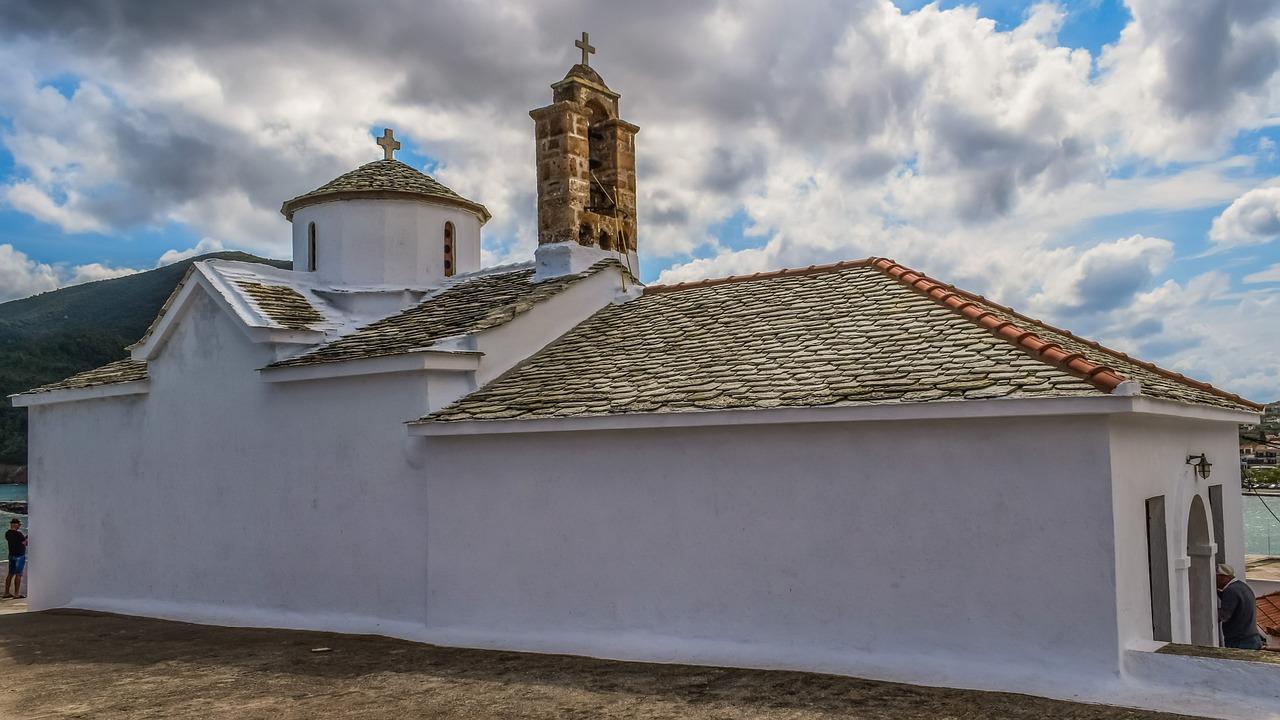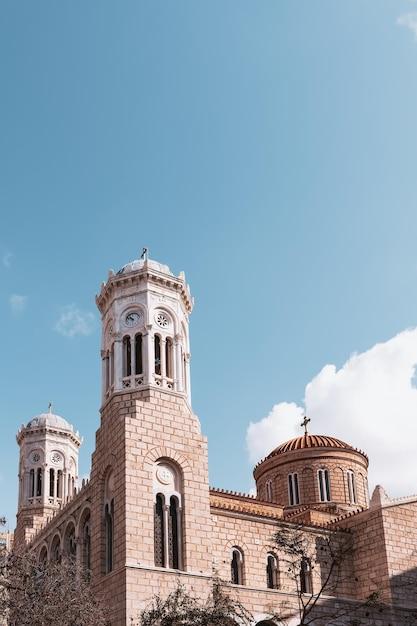Welcome to our blog post exploring the main differences between Roman Catholicism and Greek Orthodoxy. As two of the oldest and largest branches of Christianity, these traditions have played significant roles in shaping religious practices and beliefs. While they share similarities in their dedication to Christ, the Virgin Mary, and the teachings of the Apostles, there are also distinct customs and doctrines that set them apart.
In this article, we will delve into various aspects such as sacraments, marriage rituals, and core beliefs to shed light on the contrasting characteristics of Roman Catholic and Greek Orthodox traditions. Whether you are curious about how these faiths differ or simply seeking to deepen your understanding of Christianity’s diverse expressions, this comprehensive exploration will provide valuable insights. So, let’s explore the intriguing world of Roman Catholicism and Greek Orthodoxy side by side.

The Great Divide: Roman Catholic vs. Greek Orthodox
In the realm of Christianity, two ancient and venerable traditions stand tall: Roman Catholicism and Greek Orthodoxy. While they share a common faith in Jesus Christ, the two branches have developed distinct identities over centuries, resulting in a few key differences. So, let’s dive into the holy waters and explore the age-old question: What are the main differences between Roman Catholic and Greek Orthodox?
1. Papal Supremacy vs. Conciliar Authority: Who Wears the Holy Pants
In the Roman Catholic Church, the pope serves as the head honcho, the big cheese, the top dog of the entire shebang. His authority is considered to be supreme and infallible, meaning that when he speaks ex cathedra, he’s got divine backup. On the flip side, in Greek Orthodoxy, there isn’t a singular supreme ruler. Instead, decisions are made collectively by the Patriarch and other bishops during church councils. It’s like a holy democracy, where the voices of many guide the ship.
2. Chalice or Spoon: The Holy Communion Conundrum
When it comes to receiving the Eucharist, Roman Catholics use a thin wafer called a host. Yes, you read that right, it’s actually called a “host.” No, it doesn’t come with toppings and a side of holy guacamole. This host represents the body of Christ and is placed directly on the believer’s tongue. It’s a tasteless experience, but hey, it’s Jesus, so who’s complaining?
On the other hand, in Greek Orthodoxy, they serve up the Holy Communion using a small spoon. Picture someone doling out spiritual soup, except instead of tomato soup, it’s the blood of Christ. This spoonful of divinity is mixed with the bread, creating a mystical union. So, whether you prefer your body and blood of Christ on a plate or in a spoon, these traditions have you covered.
3. Let There Be Light: Differences in Liturgical Practices
The liturgical styles of Roman Catholic and Greek Orthodox traditions are as distinctive as the Pope’s pointy hat. Roman Catholic services tend to be more standardized and structured, following a set order of prayers and rituals. It’s like watching a well-rehearsed Broadway show, with all the cues and choreography in perfect harmony.
Greek Orthodox liturgy, on the other hand, is a bit like a jazz improvisation. While there’s a general structure, individual priests have more freedom to wing it and let the Spirit guide them. It’s like a holy jam session where the priest and the congregation create a spiritual symphony together. So whether you prefer a well-rehearsed musical or a divine jam session, these traditions have a liturgical style for you.
4. Old vs. New Testament: Different Books, Same Message
Both Roman Catholics and Greek Orthodox Christians embrace the Holy Bible as their central holy text. However, there’s a slight difference in the selection of books. Roman Catholics have a few extra texts tacked onto the end of the Old Testament, known as the Deuterocanonical books. It’s like bonus content for the faithful.
In contrast, the Greek Orthodox Church sticks to the tried and true Old Testament books found in the Septuagint, a Greek translation of the Hebrew Bible. So while they may have differing reading lists, both traditions ultimately share the same divine message.
5. Saints, Singers, and Special Days: A Tale of Tradition
When it comes to saints, Roman Catholics have a vast assortment to call upon for intercession. They’ve got Mary, the mother of Jesus, a whole heavenly posse of apostles, as well as numerous saints assigned to specific causes and occupations. It’s like having a spiritual A-team ready to help out in times of need.
Greek Orthodox Christians also have their celestial backup squad, but they tend to give center stage to the Virgin Mary, who is highly revered in their tradition. And while Roman Catholics may have their fair share of candles, icons, and incense, Greek Orthodox worship takes it up a notch with breathtaking chants that transport you to heavenly realms. It’s a feast for the ears and the soul.
In Summary: Uniting in Differences
So, there you have it, folks, the main differences between Roman Catholic and Greek Orthodox traditions. From the papal authority and liturgical practices to the way they serve up the Holy Communion, these ancient branches of Christianity may have their quirks, but they are united by their love for Christ and the pursuit of spiritual truth. So, whether you find yourself in the pews of a grand cathedral or a humble chapel, remember that what truly matters is the faith that brings us all together on this wild spiritual journey.

FAQ: Main Differences between Roman Catholic and Greek Orthodox
Can Catholics Marry Greek Orthodox
Religious love knows no boundaries, but sometimes the rules do! According to the current religious guidelines (as of 2023), Catholic and Greek Orthodox lovebirds can indeed tie the knot. However, it’s not as simple as grabbing a bouquet and saying “I do.” Both parties have to navigate through a labyrinth of requirements and approvals to make their union official. So, to all you love-struck individuals with divergent religious backgrounds, get ready to embark on a bureaucratic adventure!
What Are the Seven Sacraments of the Orthodox Church
Ah, sacraments! The holy milestones that mark our spiritual journey through life. While the Roman Catholic Church boasts seven sacraments, the Greek Orthodox Church waves its own sacred flag. Brace yourselves; we’re about to unveil these symbolic rites:
- Baptism: The spiritual splash that welcomes every believer.
- Chrismation: The holy anointing that seals the divine grace within.
- Eucharist: The super-communion that nourishes our souls.
- Confession: The confession booth rendezvous that cleanses our guilt.
- Ordination: The ordainment of the chosen few into the sacred priesthood.
- Marriage: The holy bond that unites two hearts into one.
- Anointing of the Sick: The spiritual TLC for the unwell and weary.
What Are the Main Differences between Roman Catholic and Greek Orthodox
You’ve come to the right place! Let’s dive into the ocean of differences between Roman Catholicism and Greek Orthodoxy. While they both belong to the same Christian family tree, these two branches have their unique quirks.
1. Papal Primacy:
The elephant in the room! Catholicism recognizes the Pope as the supreme authority, while Orthodoxy prefers a more democratic approach with equal love for all its bishops.
2. Filioque Controversy:
Ah, those pesky Latin words! Catholics, ever the language mixers, believe the Holy Spirit “proceeds from the Father and the Son” (Filioque). Orthodoxy, on the other hand, politely disagrees, asserting that the Holy Spirit proceeds from the Father alone.
3. Liturgical Styles:
When it comes to worship fashion, these two churches definitely have their own runways. Catholic liturgy tends to involve a bit more theatrics, elaborate vestments, and frequent use of incense. Meanwhile, Orthodox liturgy focuses on ancient traditions, enchanting chants, and breathtakingly beautiful icons. It’s like watching a fashion show by two entirely different designers!
4. Leavened vs. Unleavened Bread:
In the battle of the bakers, Catholics use unleavened bread (without yeast) during the Eucharist, believing it better represents the body of Christ. On the flip side, Orthodox Christians prefer their bread to rise to the occasion. Rest assured, it’s not a debate that puts carbs on trial!
Do Orthodox Weddings Have Vows
Let’s be honest, who doesn’t love a good wedding vow? In Orthodox ceremonies, you won’t find the classic “I take you to be my lawfully wedded spouse” line. Instead, the exchange revolves around crowning the couple (literally with crowns) and prayers for a blessed marriage. It’s like a fairytale come true!
What Are the Similarities between Catholic and Orthodox
Sure, they may have their differences, but Catholic and Orthodox Christians hold more in common than just their love for a divine power. Here are a few shared traits:
- Love for Jesus: Whether you’re Catholic or Orthodox, the love for Jesus runs deep in your spiritual veins.
- Sacred Traditions: Both churches embrace sacraments, liturgy, and the rich tapestry of tradition.
- Saintly Company: Saints serve as spiritual superheroes in both the Catholic and Orthodox realms, offering intercession and inspiration.
- Devotion to Mary: Mother Mary holds a special place in the hearts of Catholics and Orthodox alike, because who doesn’t want a loving heavenly mom?
What Do Orthodox Believe about Marriage
Hearts ablaze, rings exchanged, and guests dancing the night away! Orthodox Christians consider marriage a sacred union, blessed by the divine. An Orthodox marriage is often seen as a reflection of the holy relationship between Christ and His Church. It’s not just about the love between two people; it’s a bond that’s rooted in the ultimate love story—the love between the Creator and His creation.
With these FAQs, you’re one step closer to unraveling the mysteries of Roman Catholicism and Greek Orthodoxy. So, whether you’re pondering theological differences, planning a cross-denominational wedding, or simply satisfying your curiosity, remember that unity exists in the midst of diversity. Let faith, love, and understanding guide your journey!
